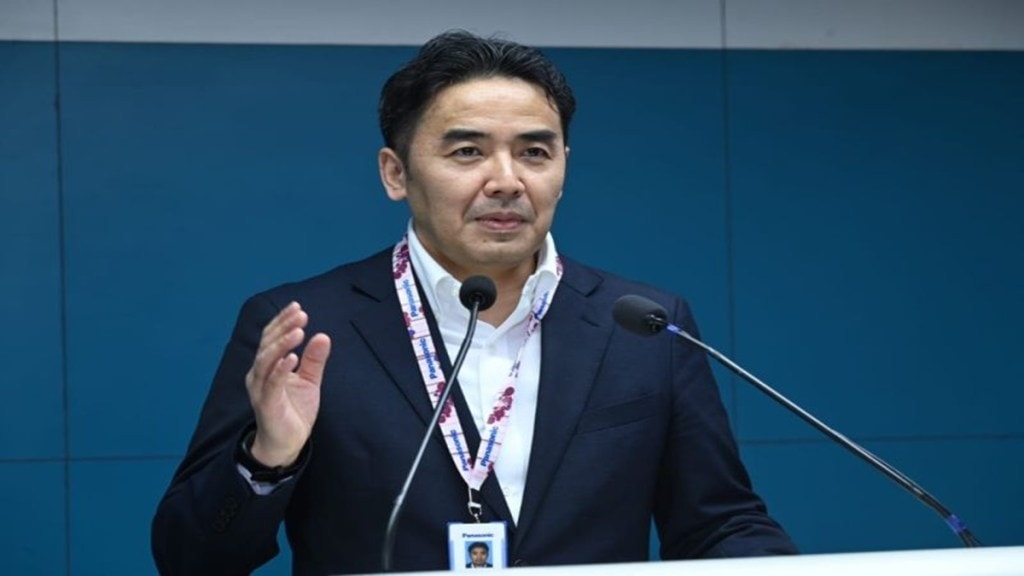Panasonic Life Solutions India has recently undertaken a strategic recalibration of its business, shifting focus towards growth segments and future-ready solutions. The Japanese electronics and appliance major is moving away from categories like washing machines and refrigerators, and instead focusing on home automation, B2B solutions, electricals and energy solutions. Tadashi Chiba, MD & CEO, Panasonic Life Solutions India, speaks to Sudhir Chowdhary on the revamped business plan and outlook for the Indian market. Excerpts:
What led to the recent restructuring of business?
Panasonic first entered the Indian market in 1972 with dry cell battery operations and re-launched its operations in a big way in 2008. Today, it has become a diversified technology company, delivering a wide range of B2B and B2C solutions. In line with our global strategy and evolving market dynamics, the company is rebuilding operations to focus on future-ready growth segments such as home automation—heating, ventilation & air conditioning (HVAC)— commercial and residential, B2B solutions, electricals and energy solutions etc. Washing machines and refrigerators have been the loss-making categories over the years and after thorough evaluation, investigation and interventions, we’ve exited the categories.
How are you integrating technologies based on AI?
We drive innovation through new-age technologies like IoT, AI/ML, and automation across B2B and B2C offerings. Our in-house IoT platform, Miraie —launched in 2020—remains a key innovation hub, enabling seamless appliance control, intelligent diagnostics, and enhanced performance. For example, Miraie-enabled ACs allow personalised sleep settings with hourly temperature adjustments, while delivering comfort, connectivity, convenience, and energy savings.
Centered at Miraie, we recently launched our Smart Home Experience Centre in Jhajjar, Haryana. Showcasing Panasonic solutions from indoor air quality to automation and security, it caters to consumers and enterprises, including architects, builders and system integrators, and can integrate third-party products as well. We aim to position Miraie not just as a product, but as an integrated platform solution that delivers long-term value to our customers.
What are your targets over the next 3-5 years?
We have a goal of achieving 15-20% growth over the mid-term (3-5 years). While price competitiveness is intense, our focus will be on leveraging Panasonic’s global technological strengths and deepening partnerships to deliver differentiated value and sustain long-term growth.
In India, we have nine manufacturing locations. In Technopark, Jhajjar, we produce HVACs; at our Smart Factory (PSFSIN), welding equipment, robotic systems, and SMT systems; and across Electric Works (PEWIN) facilities, switchgears, wires, cables, tapes, conduit pipes, lighting, solar, housing, power tools to name a few.
We will continue to invest and expand on a demand basis. For instance, Panasonic Electric Works India (PEWIN) is gearing up to increase the installed capacity of switches and sockets in Sri City near Chennai by fourfold in two phases till 2030 by investing around Rs 400 crore.
How is Panasonic gearing up for the festive season?
This festive season, we see strong demand being driven by smart, connected, and energy-efficient appliances. Aligned with this trend, starting Onam, we have introduced attractive finance schemes, extended warranties, and cashback offers etc., to make premium products more accessible. To enhance the festive line-up, we have launched new LEDs line-up, including ShinobiPro MiniLED range and full-frame LUMIX cameras, complementing our earlier introduction of 61 new RAC models and around 30 CAC models. Our Miraie-enabled IoT ACs remain a clear consumer favourite, and we expect this trend to strengthen further, particularly in the premium and connected home segments – during the festive period.
